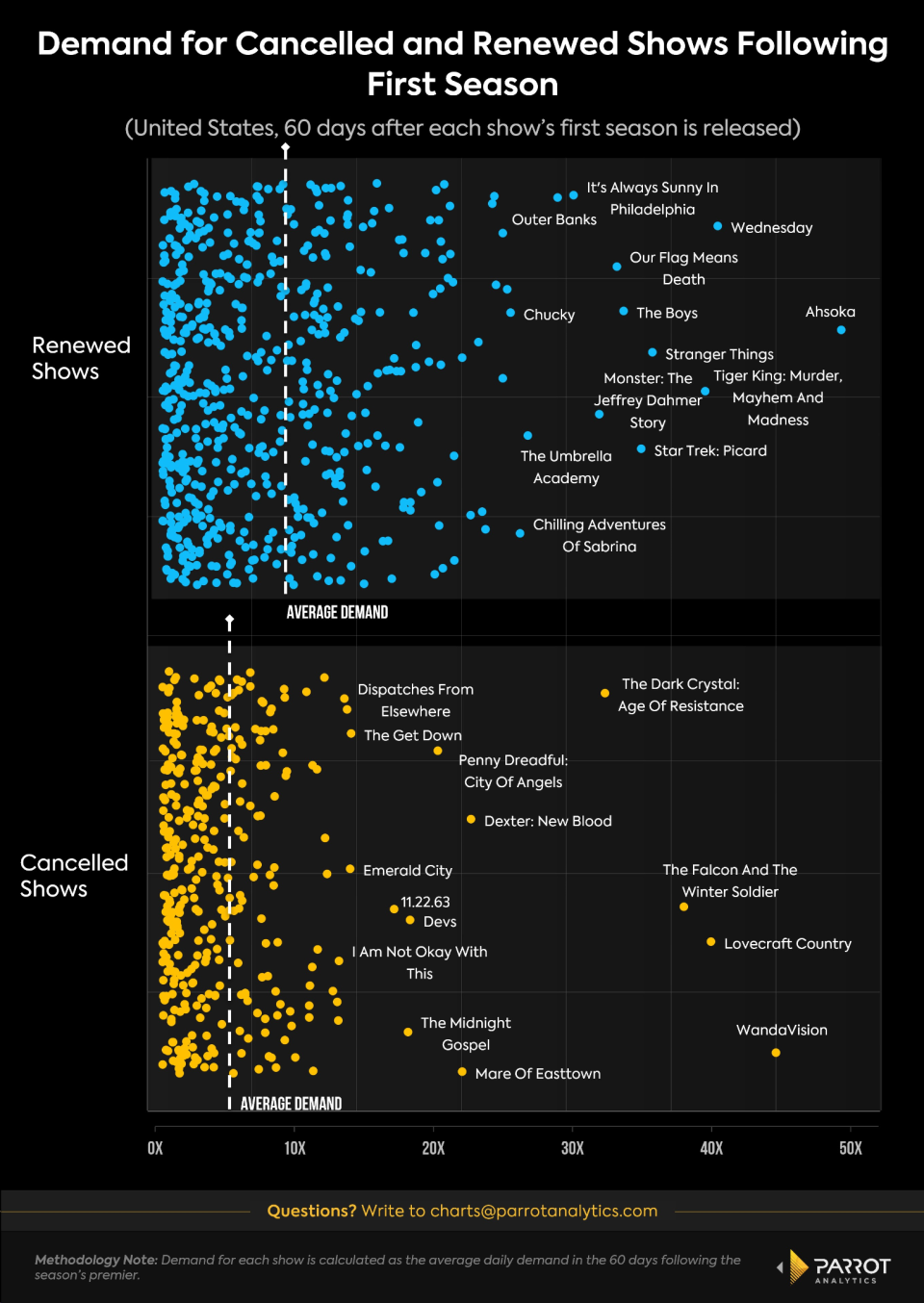One-Season Wonders: How High Is Demand for Canceled TV Shows? | Chart
- Oops!Something went wrong.Please try again later.
The practice of networks and streaming platforms canceling shows after just one season has become increasingly prevalent. In some instances, not only are further seasons not produced, but the original season is also removed from the platform’s lineup. Although this often provokes frustration among fans, companies typically justify these cancellations citing reasons such as cost reduction, creative shifts, and, most notably, the show’s failure to sufficiently capture audience attention.
To understand the factors behind these one-season cancellations, we can look at Parrot Analytics’ demand data. By comparing the average demand for shows canceled after one season against those renewed for additional seasons, a significant disparity is evident across various platforms.

A notable observation is that on Disney+, canceled shows tend to have higher average demand compared to cancellations on other platforms. Specifically, Disney+ shows axed after their first season showed, on average, four times more demand than the typical show in its initial 60 days. Disney+ is recognized for having a notably high cancelation rate, a trend that aligns with a strategic shift in the company’s programming. Under the leadership of returning CEO Bob Iger, Disney is focusing on releasing fewer shows, aiming for a more streamlined and selective catalog.
The increasing frequency of show cancellations reflects a broader industry trend affecting not just Disney, but all major platforms. There’s a shift from prioritizing subscriber growth through original programming to concentrating on improving financial performance. As a result, if a show doesn’t resonate with audiences in its debut season, it faces a high risk of cancellation, leading platforms to quickly move on to new projects.

Interestingly, Disney stands out for canceling shows that have experienced successful first seasons. For instance, “WandaVision” and “The Falcon and the Winter Soldier” will not see second seasons despite their initial success. This pattern is not exclusive to Disney; other networks are also discontinuing popular shows. HBO, for example, canceled “Lovecraft Country” during its second season’s development, and Netflix announced the cancellation of “The Dark Crystal: Age Of Resistance” a day after it won an Emmy Award in 2020. These shows had demand levels comparable to those of the most popular renewed shows, highlighting the unpredictability and harsh realities of the current streaming and television landscape.
Daniel Quinaud is a senior data analyst at Parrot Analytics, a WrapPRO partner. For more from Parrot Analytics, visit the Data and Analysis Hub.
For all of TheWrap’s Hollywood strike coverage, click here.
The post One-Season Wonders: How High Is Demand for Canceled TV Shows? | Chart appeared first on TheWrap.

